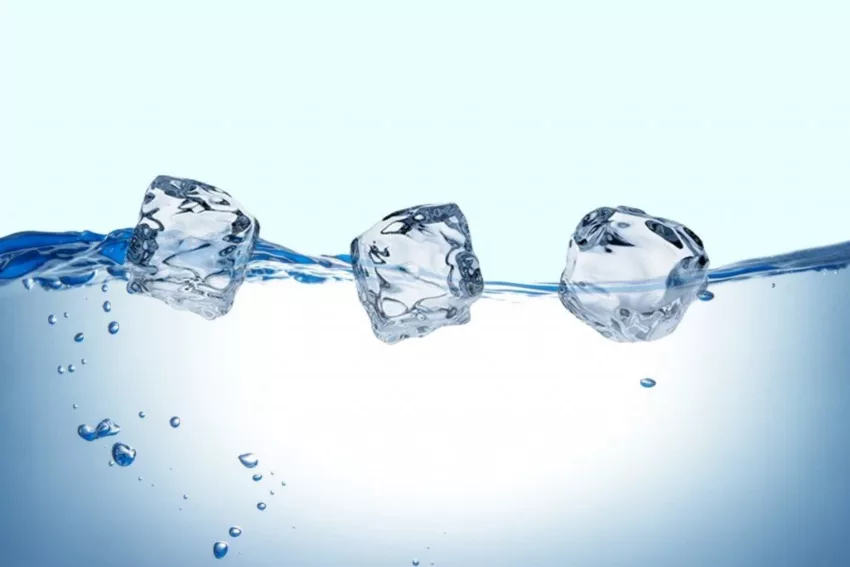Ever wondered why ice floats on water while most things just sink?
It’s one of those odd little mysteries you probably noticed during a cold drink or a chilly winter day — but never really questioned.
So, why does ice float on water?
You’re about to find out.
In this post, we’ll break down the science behind it, without the complicated terms. We’ll look at what makes ice different from other solids, how water’s behavior breaks the usual rules, and what all of this means in real life. From keeping lakes alive in winter to why your soda stays cold, it’s more than just a quirky fact.
The Basic Principle – Understanding Buoyancy
Let’s start with the basics — buoyancy. It’s the force that decides whether something sinks or floats when you drop it into water. If that upward force is stronger than the object’s weight, it floats. If not, down it goes.
Pretty much everything follows this rule. A stone sinks because it’s heavier and denser than water. A wooden log floats because it’s lighter and less dense. Simple enough, right?
But then comes ice — and it doesn’t play by the usual rules.
Ice is made of the same water molecules as liquid water. But once it freezes, something weird happens. The molecules spread out. They form a special open structure that takes up more space than before. That makes ice less dense than the water it’s sitting in.
So, instead of sinking like most solids do in their own liquid form, ice floats. It’s one of the rare exceptions where the solid form is lighter than its liquid version.
This odd twist in behavior isn’t just a cool science fact — it’s the reason lakes don’t freeze from the bottom up, and why life underwater survives the winter.
The Role of Density
In simple terms, density is how much “stuff” is packed into a certain amount of space. More formally, it’s the mass of something divided by its volume. If something has a lot of mass squeezed into a small space, it’s dense. If it’s spread out, it’s less dense.
So, how does that tie into floating? Easy. If an object is denser than water, it sinks. If it’s less dense, it floats. That’s why a metal spoon sinks, but a sponge floats — even though they might weigh about the same.
Now here’s the twist: ice is less dense than liquid water. That’s weird, right? Most solids are denser than their liquid versions. But water breaks the mold.
When water freezes, its molecules lock into a crystal-like pattern. This structure has gaps — it’s more spaced out than when the water was liquid. That spacing means less mass in the same volume, which drops its density.
So, when ice forms, it’s actually lighter, not in weight, but in how tightly packed it is. That’s why it rises to the top and just floats there, defying what most solids do.
Similar read: Why Earth Is Called The Blue Planet?
Ice’s Molecular Structure
Let’s peek at what’s happening on the tiniest level — right down to the water molecules.
In liquid form, water molecules move around freely. They’re constantly bumping, sliding, and shifting. There’s no fixed shape or pattern. That gives them the flexibility to squeeze together and fill up space more tightly.
Now, freezing changes everything.
As the temperature drops, the water molecules slow down. And here’s where it gets interesting: they start forming a solid structure. Not a tight one, but a crystal-like pattern full of little spaces.
Think of it like a honeycomb made of water molecules. The pieces are neatly arranged, but they don’t pack in close. There’s open space between them, and that space makes all the difference.
At the heart of this behavior are hydrogen bonds. These tiny forces link the molecules together when water starts to freeze. And instead of pulling them closer, they hold them at just the right distance to create that open structure.
This setup is stable, but not dense. That’s why frozen water takes up more room than it did as a liquid. Same number of molecules, just spread out more.
So, when you drop an ice cube into water, you’re seeing that open structure in action. It’s lighter for its size, and that’s exactly why it floats.
Similar read: Exploring the Reasons Behind Universities Banning TikTok
The Freezing Process
When water freezes, its molecules slow down and start locking into place. But instead of squeezing together, they spread out into a fixed, open pattern. That shift increases the volume and lowers the density, which is exactly why ice floats.
Colder temperatures make this even more noticeable. As the water cools, its density rises until it hits around 4°C. Go any lower, and it starts to drop again, right up to the point it freezes. Once solid, the density stays lower than liquid water.
So the colder it gets, the more space those frozen molecules need.
The Importance of Ice Floating on Water
If ice sank, winter would be brutal underwater. Lakes would freeze from the bottom up, leaving no chance for fish or plants to survive. But since ice floats, it forms a top layer that insulates the water below, keeping it warm enough for life to go on.
You’ve seen the upside, too. Ice cubes float in drinks, cooling from the top without sinking. Massive icebergs, though dangerous, stay afloat and visible. And in cold storage, floating ice helps keep things chilled evenly.
What seems like a simple trick actually keeps both ecosystems and everyday life running smoothly.
Conclusion
So, why does ice float on water? It all comes down to buoyancy, density, and the way water molecules behave when they freeze. Unlike most solids, ice spreads out and becomes less dense, thanks to those hydrogen bonds forming a loose, open structure.
This simple fact has huge effects. It protects life in frozen lakes, helps cool your drinks, and keeps entire ecosystems balanced.
Understanding it isn’t just science trivia, it’s a reminder that even everyday things can have incredible stories beneath the surface. All it takes is a closer look at what’s really going on.
FAQS
1. Why does ice float on water but other substances sink?
Unlike water, most substances become denser when they freeze. As a result, their solid forms sink in their liquid counterparts. Ice, on the other hand, defies this trend due to its unique molecular structure and the presence of hydrogen bonds.
2. Can ice sink under certain conditions?
Under extreme pressure, it is theoretically possible for ice to sink into the water. However, this occurs at pressures far beyond what is typically found on Earth. In everyday conditions, ice will always float on water.
3. Are there any implications of ice floating on water?
The fact that ice floats on water is crucial for life on Earth. Bodies of water freeze from the top down, with ice acting as an insulating layer that protects aquatic life during winter months. If ice sank, the consequences for marine ecosystems would be significant.
- What Synthetic Media Is and How It’s Transforming Digital Content? - November 4, 2025
- What is a Personal Digital Assistant? - September 6, 2025
- What is a Digital Audio Workstation? - September 3, 2025


